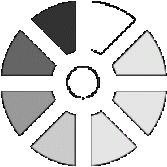Structure of Education System in Japan
In the world of knowledge based communities and speedy Globalisation, there is an increasing need of quality education system. Japanese education system has been emerged as a well developed and quality education provider.
Japan is basically a technological country, so the teaching methodology is a techno-nihilist form of education. The curriculum is designed in such a way that the children develop motor skills early on. While school is mandatory till the child reaches the secondary level, there are multiple systems with local variations to promote higher education. Vocational education is systematically planned to keep the students at par with the global standards.
The structure of education system in Japan includes preschool, primary, lower secondary, higher secondary and college/university. Admission to all levels of education requires passing of entrance exams. There are entrance exams for students entering preschool, primary, lower secondary, higher secondary, and colleges/universities. The most essential tests are those given for entrance to the higher secondary schools and the universities. Both public and private high schools in Japan require such tests and usually test the main five fields: Japanese, English, Mathematics, Science and Social Studies.
Pre-primary Education
Pre-Primary Education is provided either through a kindergarten/play school, which is an educational institution, or through a day-care centre, which is a kind of well being institution as defined by the Child Welfare Law. These institutions are proposed to develop the cognitive skills of kids from age one to five and therefore, to prepare them for the six years of compulsory elementary level of education.
Most of the schools providing pre-primary education are of private funding. Few public or government funded pre-primary schools are also there.
Primary Education (Elementary Education)
Elementary education in Japan begins at the age of 6 and is mandatory for children to attend school for this period. years. Lower secondary education is the final stage of mandatory education and caters to students from 12 to 15 years of age.
Education in elementary school consisting grades one to six. Elementary teachers are usually responsible for all subjects, and classes remain in a single room for maximum activities. All the teachers and professors are very well prepared.
There are both private and public schools for elementary level of education. Almost 100% students from pre-primary schools go for elementary education.
Lower-Secondary Education (Junior High School)
Lower-Secondary Education covers grades seven, eight, and nine- children from the ages of roughly twelve to fifteen--with special focus on academic studies.
Lower Secondary level of education is not compulsory in Japan, but almost 96% of students from primary level do go for secondary level. The public schools for secondary education are more, as compared to private schools in Japan. Also, the private schools are more expensive than public schools.
At the lower secondary school, a teacher is assigned to teach one specific subject. Subjects covered in secondary level of education are mathematics, science, social studies, art and crafts, English, health, fine arts, physical education, music and other foreign languages too. Since 2011, English has been made compulsory in the school curriculum. So, many native English speakers are being hired to improve the standard of English Education in schools in Japan.
Some teachers are allotted to take the responsibilities for the classroom along with teaching a specific subject. Generally, the class-assigned teacher is responsible for providing students academic and career guidance. Also, it is her responsibility to prepare documents and academic records of students such as report cards, teaching-learning record (Shido-Yoroku), dossiers, etc. Of late, however, in maximum cases experts take over the task of providing career guidance.
In addition, school also covers the extra-curricular activities like sports, moral studies and industrial arts.
Upper-Secondary Education (Senior High School)
Even though upper-secondary education is not compulsory in Japan, but almost 94-96% of students passed from junior high school go for senior high school education. It is again three years of education. More than 50% schools providing senior high school level of education are of private funding.
The curriculum includes basic subjects like Mathematics, Science, English and Japanese. In the later years of high school education some vocational and technical courses are also included in the curriculum. Courses like business, fish farming, information processing, accounting and computers are quite popular among students.
Upper-Secondary schools are structured into departments, and teachers specialize in their fields arena although they teach diverse courses within their disciplines. They are generally University Graduates. They work with the goal of covering all the aspects of the subject elected by a student within the academic year. Special training of technical courses are given to students with disability, thereby making them independent enough to survive on their own means.
University/Higher Level of Education
In the age of knowledge-based society and enduring globalisation, higher education institutions play indispensable roles. Under such circumstances, Japanese higher level of education has been highly treasured. There are more than 700 Universities all over in Japan. Normally, three to four year of university education makes a student graduate in Bachelor’s degree. Also, there are some professional degree/diploma courses spanning 5 to 6 years of education. Most popular subjects among students in Japan are Business Management, Accounting, Engineering, Law, Humanities and Social Sciences.
In Japan, public universities enjoy better prestige than their private counterparts and only about 27 percent students manage to get admission in public universities. The tuition fee of Private universities is manifold as compared to a Public varsity so, students opt for correspondence and distance courses along with a part time job.
 Processing...
Processing...